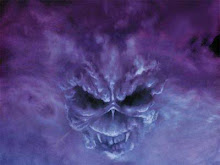Tawiscara as Trickster over Ioskeha as Trickster
Tawiscara
Twin brother of Ioskeha.
Known as
Tawiskara,Tawiscana, Tawiskala,
Tehotennhiaron, Dark One, The Dark One
Tawiscara is an evil spirit of the North American Huron Indians. Grandson of the moon and son of Wind-Ruler and Breath-of-Wind fought with Ioskeha his twin brother while still in their mother’s womb and she died when they were born. From then on they fought for supremacy and eventually Ioskeha prevailed, becoming the supreme god of the Iroquois while Tawiscara was banished to the underworld.
Twinship in Native American Mythology.
The role of twinship in Native American mythology is complex. Some pairs of twins combine heroism with the mischievous behavior of tricksters. Occasionally, twins represent opposing forces of good and evil. The Huron people of northeastern North America tell of Ioskeha and Tawiskara, twins who dueled to rule the world. The evil Tawiskara, who fought his way out of the womb, used a twig as his weapon against his brother, while Ioskeha used the horn of a stag. Ioskeha, a positive creative force, won the conflict.
The Raven Trickster

In mythology, and in the study of folklore and religion, a trickster is a god, goddess, spirit, man, woman, or anthropomorphic animal who plays tricks or otherwise disobeys normal rules and conventional behavior. The trickster deity breaks the rules of the gods or nature, sometimes maliciously (for example, Loki) but usually with ultimately positive effects (though the trickster’s initial intentions may have been either positive or negative). Often, the bending/breaking of rules takes the form of tricks (e.g. Eris) or thievery. Tricksters can be cunning or foolish or both; they are often funny even when considered sacred or performing important cultural tasks. An example of this is the sacred Iktomi, whose role is to play tricks and games and by doing so raises awareness and acts as an equalizer.
In many cultures, (as may be seen in Greek, Norse, or Slavic folktales, along with Native American/First Nations lore), the trickster and the culture hero are often combined. To illustrate: Prometheus, in Greek mythology, stole fire from the gods to give to humans. He is more of a culture hero than a trickster. In many Native American and First Nations mythologies, the coyote (Southwestern United States) or raven (Pacific Northwest, coastal British Columbia, Alaska and Russian Far East) stole fire from the gods (stars, moon, and/or sun) and are more tricksters than culture heroes. This is primarily because of other stories involving these spirits: Prometheus was a Titan, whereas the Coyote spirit and Raven spirit are usually seen as jokesters and pranksters. Examples of Tricksters in the world mythologies are given by Hansen (2001), who lists Mercurius in Roman mythology, Hermes in Greek mythology, Eshu in Yoruba mythology and Wakdjunga in Winnebago mythology as examples of the Trickster archetype. Hansen makes the observation that the Trickster is nearly always a male figure.
Frequently the Trickster figure exhibits gender and form variability, changing gender roles and even occasionally engaging in same-sex practices. Such figures appear in Native American and First Nations mythologies, where they are said to have a two-spirit nature. Loki, the Norse trickster, also exhibits gender variability, in one case even becoming pregnant. He shares the ability to change genders withOdin, the chief Norse deity who also possesses many characteristics of the Trickster. In the case of Loki‘s pregnancy, he was forced by the Gods to stop a giant from erecting a wall for them before 7 days passed; he solved the problem by transforming into a mare and drawing the giant’s magical horse away from its work. He returned some time later with a child he had given birth to—the eight-legged horse Sleipnir, who served as Odin’s steed.
In some cultures, there are dualistic myths, featuring two demiurges creating the world, or two culture heroes arranging the world — in a complementary manner. Dualistic cosmologies are present in all inhabited continents and show great diversity: they may feature culture heroes, but also demiurges (exemplifying a dualistic creation myth in the latter case), or other beings; the two heroes may compete or collaborate; they may be conceived as neutral or contrasted as good versus evil; be of the same importance or distinguished as powerful versus weak; be brothers (even twins) or be not relatives at all.
The Coyote Trickster

Also, Wisakedjak ( Wìsakedjàk in Algonquin, Wīhsakecāhkw in Cree and Wiisagejaak in Oji-cree ) is the Crane Manitou. Found in northern Algonquian mythology, similar to the trickster god Nanabozho in Ojibwaaadizookaanan (sacred stories) and Inktonme in Assiniboine myth. He is generally portrayed as being responsible for a great flood which destroyed the world originally made by the Creator, as well as the one who created the current world with magic, either on his own or with powers given to him by the Creator for that specific purpose. His name is subject to many variant spellings, including Wisagatcak, Wissaketchak, Weesack-kachack, Wis-kay-tchach,Woesack-ootchacht, and undoubtedly others. It was some times anglicized as Whiskey Jack, which became an alternate name for the Gray Jay.












Magic Words
RăspundețiȘtergere